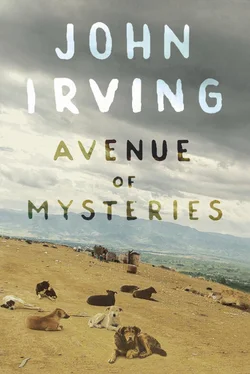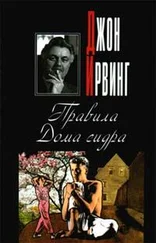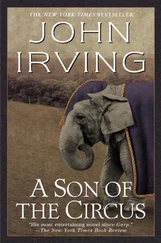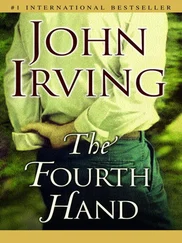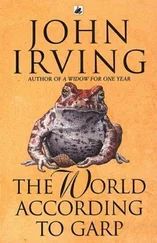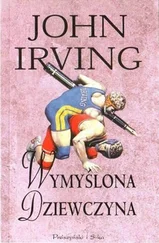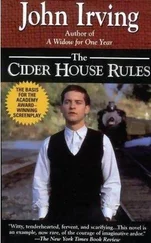Yet he not only had very high blood pressure (170 over 100). Hadn’t one of Juan Diego’s possible fathers died of a heart attack at a young age — if Juan Diego’s mother could be believed?
And then there was what had happened to Esperanza — I hope not my next disturbing dream! Juan Diego thought, knowing that the idea would lodge in his mind, making it all the more likely to be the case. Besides, what had happened to Esperanza — in Juan Diego’s dreams and in his memory — was recurrent.
“No stopping it,” Juan Diego said aloud. He was still in the bathroom, still recovering from the flushed-away sea horse, when he saw the untaken half of the Lopressor tablet and swallowed it quickly, with a glass of water.
Was Juan Diego consciously welcoming a diminished feeling for the rest of the day? And if he took a full dose of his beta-blockers later tonight in Bohol, wouldn’t Juan Diego once more experience the ennui, the inertia, the sheer sluggishness, he’d so often complained about to Dr. Stein?
I should call Rosemary right away, Juan Diego thought. He knew he’d tampered with the dosage of his beta-blockers; he may even have known he was inclined to keep altering the dose, in an on-and-off fashion, because of his temptation to manipulate the results. He knew perfectly well he was supposed to block the adrenaline, but he missed the adrenaline in his life, and — he also knew — he wanted more of it. There was no good reason why Juan Diego didn’t call Dr. Stein.
What was really going on here is that Juan Diego understood, very well, what Dr. Rosemary Stein would say to him about playing with his adrenaline and adrenaline receptors. (He just didn’t want to hear it.) And because Juan Diego understood, very well, that Clark French was one of those people who knew everything — Clark was either all-knowing or poised to find out about anything — Juan Diego made an effort to memorize the most conspicuous information in the tourist brochure about the Manila American Cemetery and Memorial. Anyone would have thought that Juan Diego had already visited the place.
In fact, in the limo with Bienvenido, Juan Diego was tempted to say he’d been there. ( There was a World War II veteran staying at the hotel — I went with him. He’d come ashore with MacArthur — you know, when the general returned in October 1944. MacArthur landed at Leyte, Juan Diego almost told Bienvenido.) But instead he said: “I’ll go see the cemetery another time. I want to take a look at a couple of hotels — places to stay when I come back. A friend recommended them.”
“Sure — you’re the boss,” Bienvenido told him.
In the brochure about the Manila American Cemetery and Memorial, there’d been a photo of General Douglas MacArthur striding ashore at Leyte in the knee-deep water.
There were more than seventeen thousand headstones in the cemetery; Juan Diego had committed this figure to memory — not to mention, more than thirty-six thousand “missing in action” but fewer than four thousand “unknowns.” Juan Diego was dying to tell someone what he knew, but he restrained himself from telling Bienvenido.
More than one thousand U.S. military were killed in the Battle of Manila — at about the same time those amphibious troops were recapturing Corregidor Island, the good gringo’s lost dad among the fallen heroes — but what if one or more of Bienvenido’s relatives had been killed in the monthlong Battle of Manila, when one hundred thousand Filipino civilians died?
Juan Diego did ask Bienvenido what he knew about the headstone locations in the vast cemetery — more than 150 acres! Juan Diego wondered if there was a specific area for the U.S. soldiers killed at Corregidor, either in ’42 or ’45. The brochure made mention of a specific memorial for the servicemen who lost their lives at Guadalcanal, and Juan Diego knew there were as many as eleven burial plots. (However, not knowing the good gringo’s name — or the name of his slain father — was a problem.)
“I think you tell them the soldier’s name, and they tell you which plot, which row, which grave,” Bienvenido answered. “You just tell them the name — that’s how it works.”
“I see,” was all Juan Diego said. The driver kept glancing at the tired-looking writer in the rearview mirror. Maybe he thought Juan Diego looked like he’d had a bad night’s sleep. But Bienvenido didn’t know about the aquarium murders, and the youthful driver didn’t understand that the slumped-over way Juan Diego was sitting in the limo’s rear seat was just an indication that the second half of the Lopressor pill was beginning to take effect.
THE SOFITEL, WHERE BIENVENIDO drove him, was in the Pasay City part of Manila — even from his slumped-over position in the limo’s rear seat, Juan Diego noticed the bomb-sniffing dogs.
“It’s the buffet you have to worry about,” Bienvenido told him. “That’s what I hear about the Sofitel.”
“What about the buffet?” Juan Diego asked. The prospect of food poisoning seemed to perk him up. But that wasn’t it: Juan Diego knew he could learn a lot from limo drivers; trips to those foreign-language countries where he was published had taught him to pay attention to his drivers.
“I know where every men’s room in the vicinity of every hotel lobby or hotel restaurant is,” Bienvenido was saying. “If you’re a professional driver, you have to know these things.”
“Where to take a leak, you mean,” Juan Diego said; he’d heard this from other drivers. “What about the buffet?”
“If there’s a choice, the men’s room the hotel restaurant — goers use is a better men’s room than the one in the area of the hotel lobby— usually, ” Bienvenido explained. “Not here.”
“The buffet,” Juan Diego repeated.
“I’ve seen people barfing in the urinals; I’ve heard them shitting their brains out in the toilet stalls,” Bienvenido warned him.
“Here? At the Sofitel? And you’re sure it’s the buffet?” Juan Diego asked.
“Maybe the food sits out forever. Who knows how long the shrimp has been lying around at room temperature? I’ll bet it’s the buffet!” Bienvenido exclaimed.
“I see,” was all Juan Diego said. Too bad, he thought — the Sofitel looked as if it might be nice. Miriam must have liked the hotel for some reason; maybe she’d never tried the buffet. Maybe Bienvenido was wrong.
They drove away from the Sofitel without Juan Diego setting foot inside the place. The other hotel Miriam had suggested was the Ascott.
“You should have mentioned the Ascott first,” Bienvenido said, sighing. “It’s on Glorietta, back in Makati City. The Ayala Center is right there — you can get anything there,” Bienvenido told him.
“What do you mean?” Juan Diego asked.
“Miles and miles of shopping — it’s a shopping mall. There are escalators and elevators — there’s every kind of restaurant,” Bienvenido was saying.
Cripples aren’t crazy about shopping malls, Juan Diego was thinking, but all he said was: “And the hotel itself, the Ascott? No reported deaths by buffet?”
“The Ascott is fine — you should have stayed there the first time,” Bienvenido told him.
“Don’t get me started on should have, Bienvenido,” Juan Diego said; his novels had been called should-have and what-if propositions.
“Next time, then,” Bienvenido said.
They drove back to Makati City, so that Juan Diego could make an in-person reservation at the Ascott for his return trip to Manila. Juan Diego would ask Clark French to cancel his reservation at the Makati Shangri-La for him; after the aquarium Armageddon, all parties would doubtless be relieved by the return-trip cancellation.
Читать дальше
